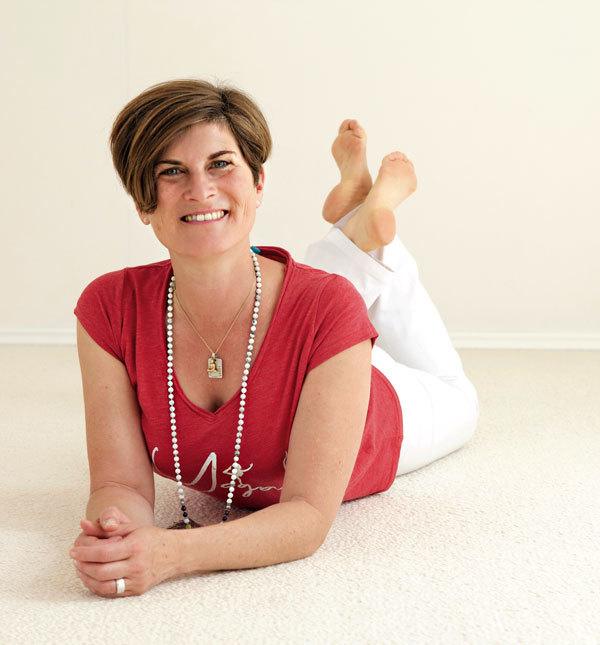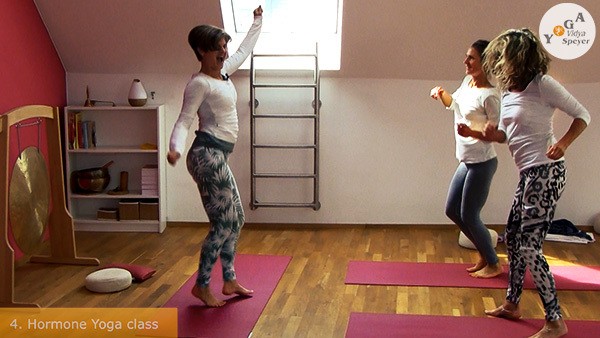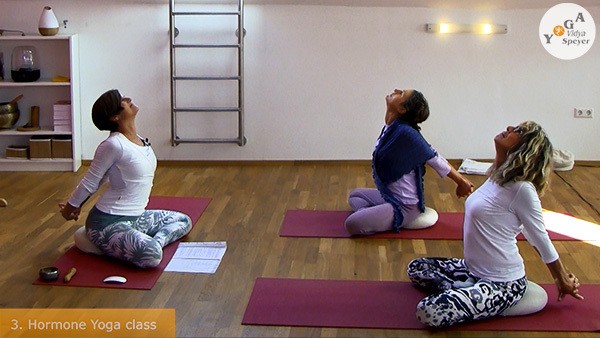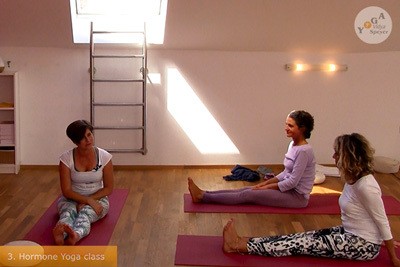Hormone Yoga Class
India, Kerala
Sign up here for the free video.
By submitting this form you agree to our privacy policy and agree to receive emails from us. With one click you can unsubscribe at any time..
Privacy policy

Get your free full Hormone Yoga Class now:
Hormone Yoga - India, Kerala
Premenstrual symptoms (PMS), menopausal symptoms or midlife crisis, sexual listlessness or an unfulfilled wish to have a child - when the hormone balance is disrupted, the symptoms are manifold. However, not only the classical female complaints are hormonal in origin, but also diabetes, migraine, acne, thyroid diseases and even depression, because hormones are significantly involved in all these processes in the body.
Hormone yoga is a natural way to bring hormone levels back into balance.

Picture: Dinah Rodrigues
Hormone Yoga is a special yoga technique developed by the Brazilian Dinah Rodrigues in 1992.
Born on 13 May 1927 in Sao Paulo, she studied psychology and philosophy. She became interested in yoga at an early age and studied with various renowned yoga teachers.
When she was 65 years old, her gynaecologist Dr. Luciano Marcondes Nardozza noticed during a routine examination that she had an excellent hormone level.
Dinah's assumption that this was due to her regular yoga practice surprised the gynecologist.
He could not imagine that yoga could have an influence on the hormone balance.
Dinah RODRIGUES pointed out that it was even possible to put together a series of yoga exercises specifically designed for female hormones. The gynaecologist asked her to develop such a series of exercises and this was the impulse for the development and emergence of Hormone Yoga.
So she began to intensify her research in this field. Before she made Hormone Yoga known in 1992, she conducted a study of 66 women, which showed that most women were able to achieve both relief from their menopausal symptoms and an improvement in their hormonal situation.
Since 1992 Dinah RODRIGUES has been giving Hormone Yoga courses and teaching training and further education.
The effects of Hormone Yoga have been confirmed by numerous scientific studies.
In 2001, Dinah RODRIGUES conducted a study in collaboration with her daughter Laura Rodrigues, who had obtained her Master of Science and Doctor of Philosophy from the University of London.
In the study, 116 women regularly practiced hormone yoga and presented their respective results for evaluation.
The study allowed the following statements: after an average of four months of practice, all women experienced an increase in hormone levels (by an average of 254% according to Quelle Rodrigues, D.: Avaliacao do efeito da pratica de Yoga-Terapia-Hormonal para Menopausa. Madras Editora 2002) as well as an improvement or elimination of her hormone-related complaints. In addition, it has been established: the more frequent the practice, the better the results.
Methodologically, Hormone Yoga contains a combination of Yoga and various Buddhist/Tibetan techniques from different traditions.
The exercises are designed to address primarily the glandular system (ovaries, thyroid, pituitary and adrenal glands).
The asanas (postures) are often performed dynamically and combined with special pranayamas (breathing techniques) and bandhas (locks) from Kundalini and Hatha yoga as well as Tibetan energy channels.
This very special, very effective and targeted combination clearly distinguishes Hormone Yoga from other known yoga styles.
Hormone Yoga consists of a certain sequence of:
Important notice:
Always consult your doctor, if you are unsure if you should practice Hormone Yoga and in case of any diseases requiring treatment.
Every woman has two ovaries, which contain and release eggs and produce hormones. They are located on the two sides of the upper part of the uterus.
During the menopause, the cyclical function of the ovaries, which produce the hormones of the female body (estrogens and gestagens), tires out and hormone levels drop.

The main function of the thyroid gland is the production of thyroid hormones which are responsible for fertility, reproduction, moods, energy balance and body weight.
Thyroid and sex hormones are closely related and influence each other. If the thyroid hormones get out of balance, the female hormones also go crazy: ovulation and menstruation can no longer take place normally.
In addition, the function of the thyroid gland in both women and men is severely impaired by stress.

The pituitary gland is often called the queen of the hormone glands because it influences and controls the other hormone glands.
It also secretes hormones itself, such as the growth hormone, which has a rejuvenating effect on the organism.

In chronic physical or psychological stress, the level of the stress hormone cortisol increases. This has far-reaching consequences for the organism.
An increased cortisol level lowers the oestrogen value as the most important hormone for women or the testosterone value as the most important hormone for men.

YOU WANT TO KNOW MORE ABOUT HORMONE YOGA?